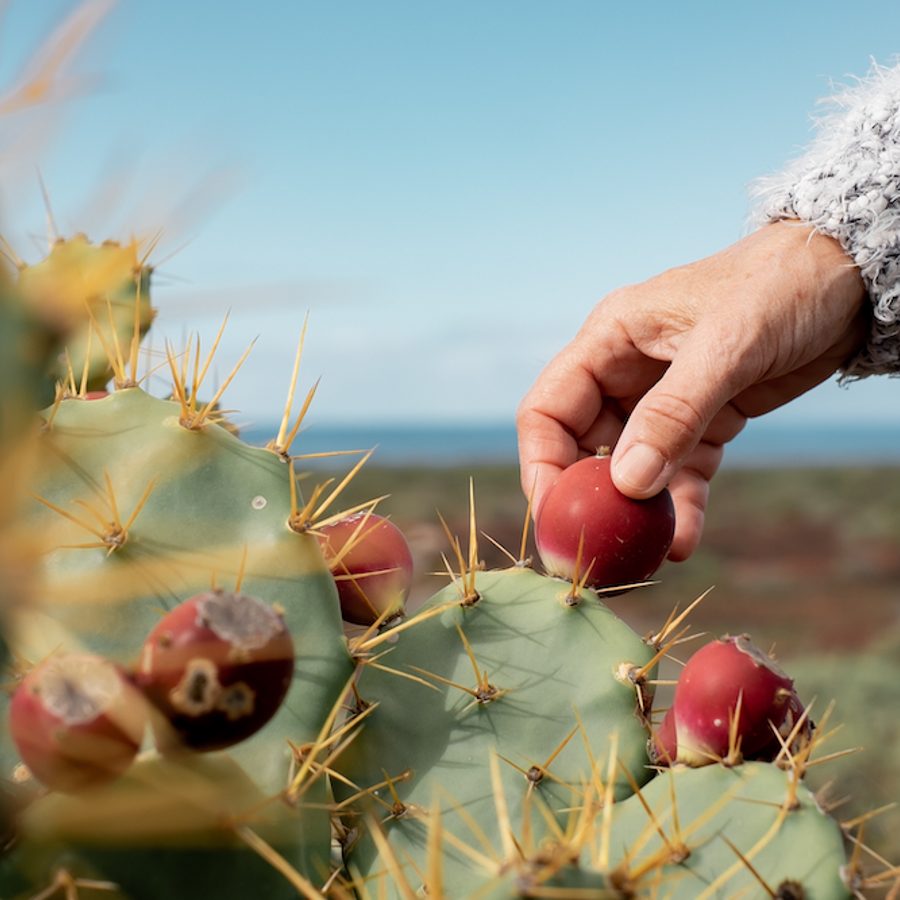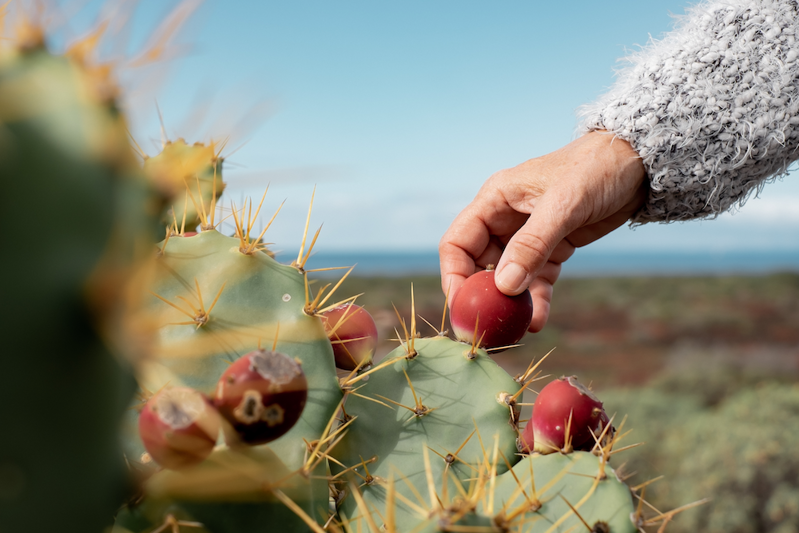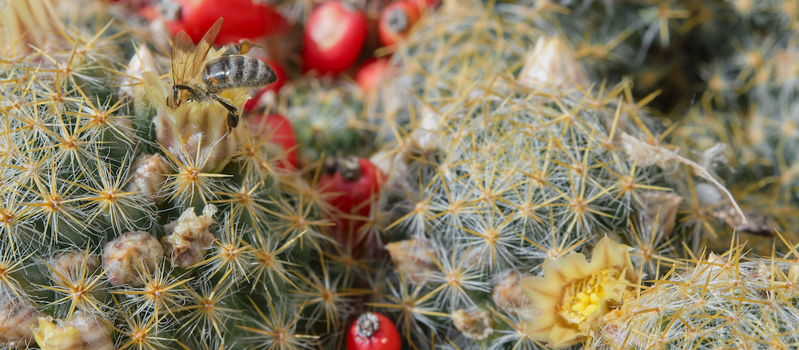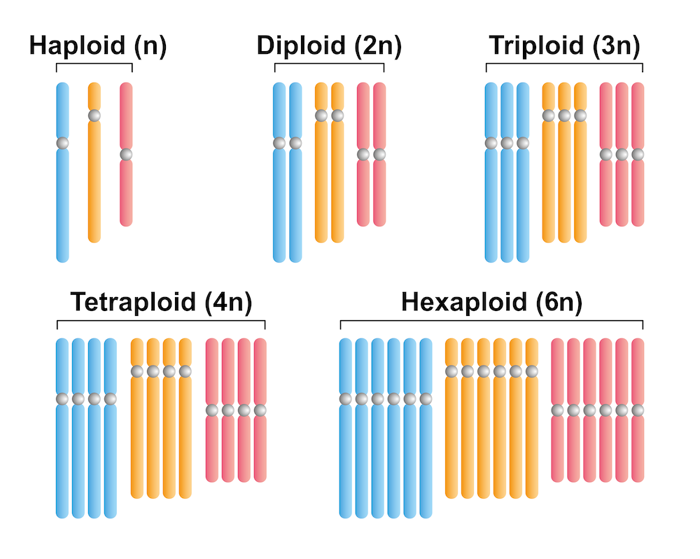
What is the difference between the DNA of a cactus and human?
May 16, 2023

- Related Topics:
- Plant biology,
- Comparing species,
- DNA basics,
- Genomics
A middle school student from San Jose, CA asks:
"What is the difference between the DNA of a cactus and human?"
There are a lot of genetic differences between people and cacti. We look pretty different from plants, right?
But at the most basic, chemical level the DNA of people and cacti are the same. We share the building blocks, the phosphates and nucleotides, that make up the rungs and frame of the DNA. Plants and people have the same A’s, T’s, C’s, and G’s in their DNA strings.
We even share a lot of genes with cacti. For example, people and plants both need to have genes for some basic life functions. Things like maintaining DNA, making proteins, and converting sugars into energy.
But there are differences at each of these steps that all work together to make plants, plants and people, people. We can’t photosynthesize since we don’t have chloroplasts. Plants can’t uproot themselves to escape being eaten.
And one of the more surprising genetic differences is that plants have way more chromosomes on average than people. This gave plants some opportunities to develop brand new genes.
Genetic Similarities
About 20-60% of our genes can also be found in plants, depending on the species1. In comparison we share about 80% of our genes with mice2, and around 95% of our genes with chimpanzees1.
Most of the genes that plants share with us turn sugars and proteins into energy. Cacti have mitochondria just like humans, and rely on them to make energy when it gets too hot or too dry for photosynthesis.
Other shared genes behave differently between plants and people. One of those genes is called Eyes Absent. In animals, it’s an important gene related to eye development. This is where it got its name — fruit flies that are missing this gene don’t have eyes at all! But in plants, this gene controls when it can put out more stems along its branches3.
In other cases, plants and humans have genes that behave similarly even though they’re not actually related to each other. Some plants have a protein called leghemoglobin. It does the same exact thing that our hemoglobin molecules do: bind oxygen.

Genetic Differences
But only some of our genes can be found in plants. And genes themselves only make up 2% or so of our total DNA. The non-gene parts of our DNA are so different from plants that it can’t be directly compared at all!
We have more in common with most mushrooms and zebrafish than plants, gene-wise. And this really shows if you take a look at what plants can and can’t do.
The green-ness of plants comes from the pigments in chloroplasts, which are the part of the plant cell that do photosynthesis. Many plant pigment genes like the blue in blueberries or the red of pomegranates aren’t found in people.
The biggest differences between people and cacti? All of the flowering genes in plants are definitely not present in people.
Flowering genes make up the bulk of genetic information in many plants. It turns out that timing the flowers just right is extremely important, because many plants can’t make any fruits without help from a pollinator like bees.

Wait, so how many chromosomes?
But all these new genes had to have come from somewhere. As it turns out, plants have duplicated their entire set of DNA. And not just a few times, or in a few plants. It happened in almost every plant, sometimes many times. It’s thought to be part of the reason that flowering plants as a group have so many more species than other plants*.
All this duplication means that plants have, for the most part, more chromosomes than we do. While people have two copies of each chromosome, some plants have eight or more copies of each.
A person usually has 23 pairs of chromosomes, for 46 in total. But the prickly pear cactus you might find in a grocery store has 88 chromosomes in total. Instead of pairs, it has eight copies of each of 11 unique chromosomes!4
This is known as polyploidy, and it’s pretty common in plants.

These extra copies of chromosomes also means that there are extra copies of all the genes within those chromosomes. That’s a lot of extra genes! When scientists ask how new plant species are made over time, the answer usually is gene duplication.
Time and evolution dislike this kind of replication, which is roughly the equivalent of installing a new kitchen sink right next to an old one.
A duplication usually initially leads to a higher expression and use of that gene. Sort of like using the extra sink to wash even more dishes at the same time.
Other times, nature tries to find something new to do with the duplicated gene. Maybe instead of using that new sink for washing dishes, it could be used exclusively for cleaning food. An extra copy that is redundant quickly gets modified to do something entirely new.
Cacti seem to have specialized some of their extra genes in this way. For example, they developed a new way to make sugars from sunlight and air by making them at night, when it’s cooler.
The proteins in photosynthesis tend to make mistakes when it gets really hot during the middle of the day. They will sometimes grab the oxygen that it just made out of carbon dioxide and stick it onto the carbons it’s trying to make into glucose. This new chemical is extremely toxic. And fixing it requires more energy than what it can make from making sugars and breaking sugars combined!
So to avoid this, most cacti will get halfway through photosynthesis throughout the day and finish the rest at night. Maybe like partially rinsing your dishes during the day in the original sink, and then sticking them in your new dishwasher at night.
The alternative pathway is thought to be caused by a gene duplication that happened after cacti separated from their closest relatives, the carnations and buckwheats5.
So overall, while we share the base pairs and the same kind of DNA structure with plants, we have a lot of genetic differences!
* Flowering plants split from pine trees a little before the dinosaurs went extinct and despite the relatively short overlap time between the two, flowering plants almost immediately established all of the groups that we can find today because of this seemingly innate ability.
Read More:
-
Harvard Gazette: Why Onions Have More DNA Than You Do
-
Ask-a-Geneticist: Can you compare human and plant DNA?
Author: Paul Markley
When this article was published in 2023, Paul was a PhD student in the Department of Biology, studying the ecological responses of arctic and alpine plants to anthropogenic climate change in Barnabas Daru’s lab. He wrote this article while in the Stanford at the Tech Program.
 Skip Navigation
Skip Navigation
